
Wait, How Is This Green-on-Green Garden Low Water?
The owner of Flora Grubb Gardens nursery in San Francisco takes us on a tour of her private garden while showing us how to create a path lined with stunning plants.
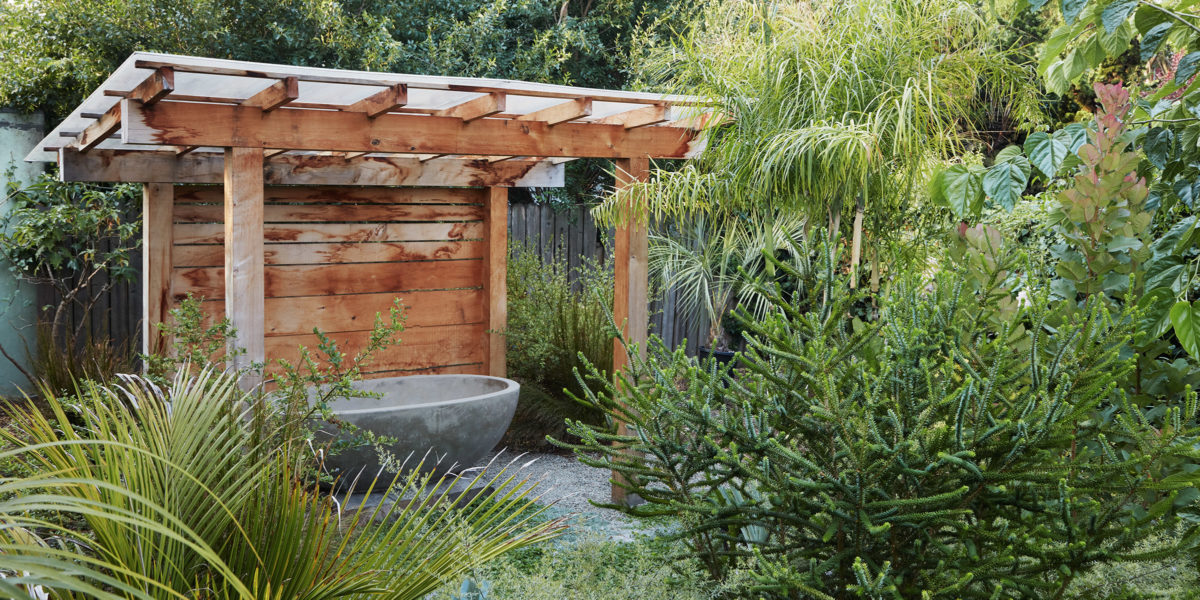
Caitlin Atkinson
Just in case you don’t know Flora Grubb, she’s the co-owner of a revered garden center in San Francisco, Flora Grubb Gardens, along with her own breathtaking wholesale nursery about 50 miles outside of San Diego. She’s also a talented landscape designer, so when she offered to show me the latest iteration of her home garden, I was thrilled.
One of the reasons this garden is so personally satisfying, Grubb says, is that she didn’t have the restraints of working with a client. After all, when a client is involved, she must consider whatever is on their wishlist. But when it’s her own home, personal expression comes into play. The result is a home garden that’s simply spilling over with greenery and is as inspiring as any I’ve seen of late.
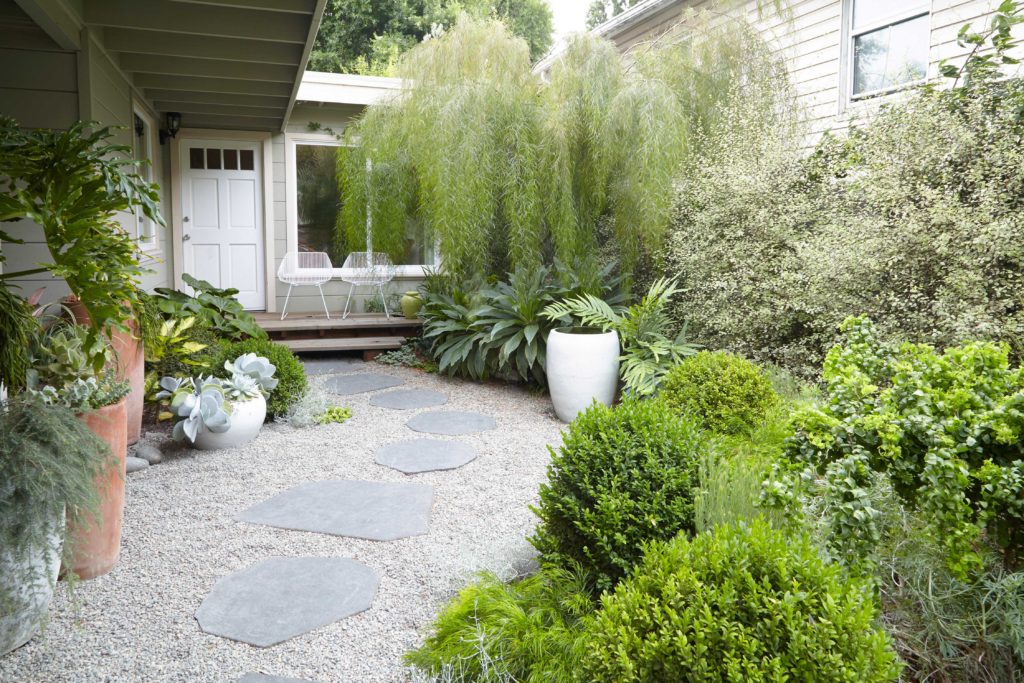
Caitlin Atkinson
There are three things I love about this space: First of all, it reflects a growing trend of gardens done in tones of green—as in, no showy flowers anywhere. (If you want to see other examples of the trend, check out this glamorous garden by Terremoto, and this multi-use entry by Scot Eckley, both of which hone in on green as the dominant color.) To me, there’s something about a bright green garden like Grubb’s that feels like a fresh oasis that relaxes the eye and the soul.
Second, I do have to say that Grubb has one of the loveliest meandering paths I’ve ever seen, lined with plants that spill over in a most particular and beautiful way.
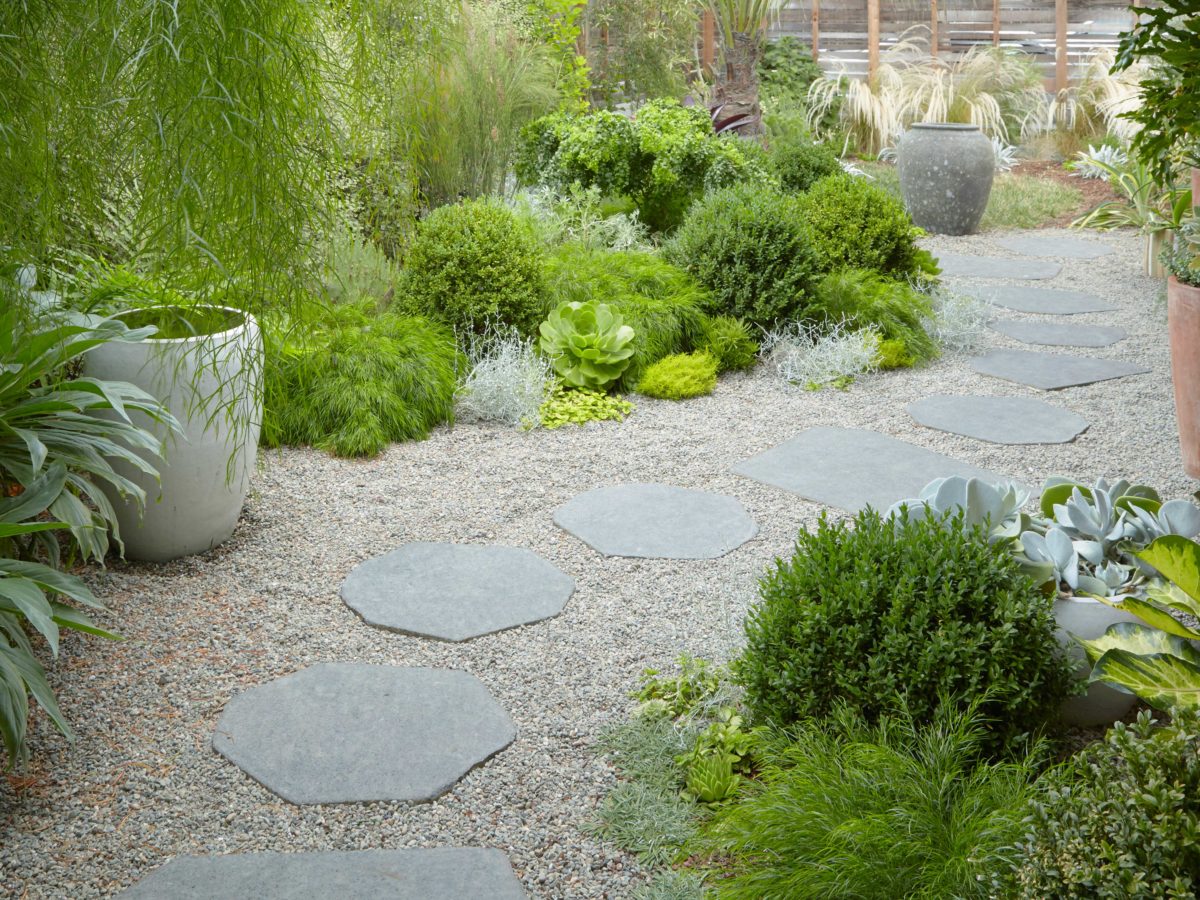
Caitlin Atkinson
And finally, this garden—as unbelievable as it may sound for so much greenery—is all low-water plants. It seems impossible, right?
Fortunately for us, Grubb was happy to tell me all the steps she took to create a garden of her own.
Make It a Secret Garden
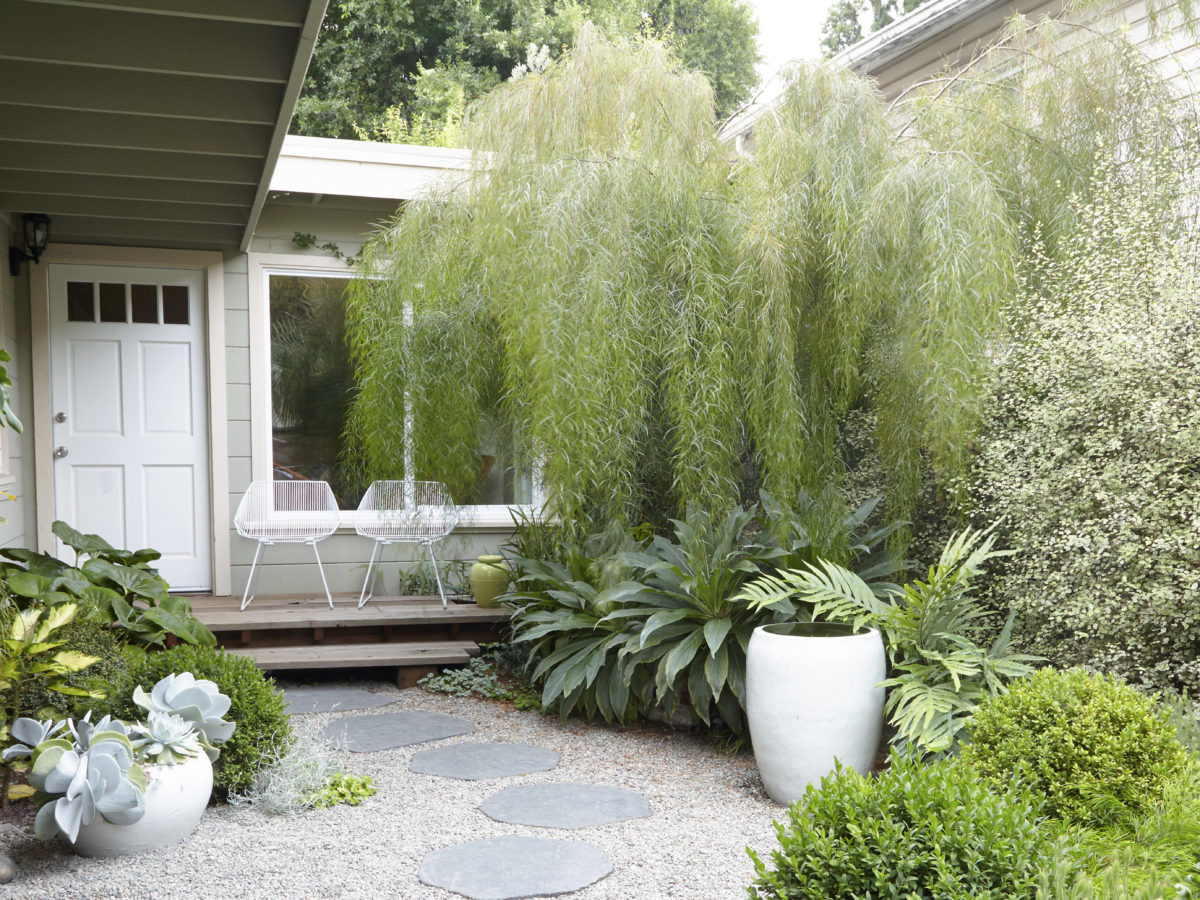
Caitlin Atkinson
The first problem Grubb decided to attack was that the garden offered zero privacy. “The house has a giant picture window that looked straight out into the sidewalk,” she says.
Her solution was to create what she calls a “zone of privacy.” She planted a silvery Acacia cognata ‘Cousin Itt’ tree that now partially blocks the window from the street. The second layer is a Brahea clara palm, which grew in so well she thinks of it as an architectural feature. Now, when you look out the picture window toward the street, you get a view of happy trees instead of people walking by.
Getting in Shape
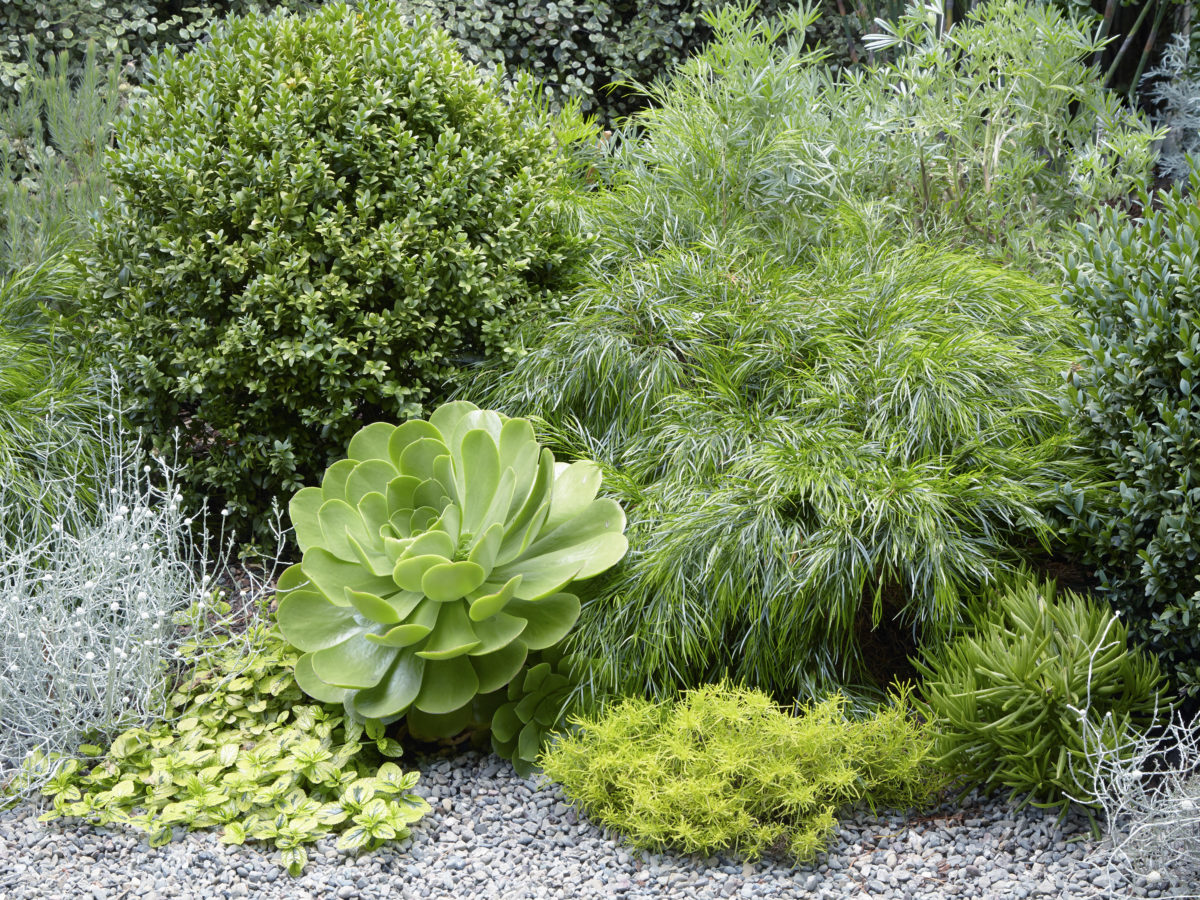
Caitlin Atkinson
“For me to get something that’s this well-composed involves putting the plants where I think they’re going to go, then running inside to look at it from there, and then looking at it from the garden chair, et cetera. I just really try to make sure that I’ve got all the proportions and everything just right,” Grubb says.
She jokes that maybe if she were a better designer she could just draw a picture, but for her, it’s better to move plants around the way you might move your furniture while rearranging a room in your house until it’s perfect.
Is this a risk? Yes, Grubb says, because one needs to buy a lot of plants at once, and it’s difficult to make that commitment. One way to lessen the blow, she says, is to literally drag plants around at the nursery to see how they look together. “I play around with different plant combinations at the nursery for a while before I commit,” she says. You can also ask for help. “In the garden center, figuring out which plants look beautiful together is just part of what we do.”
Get in Your Greens
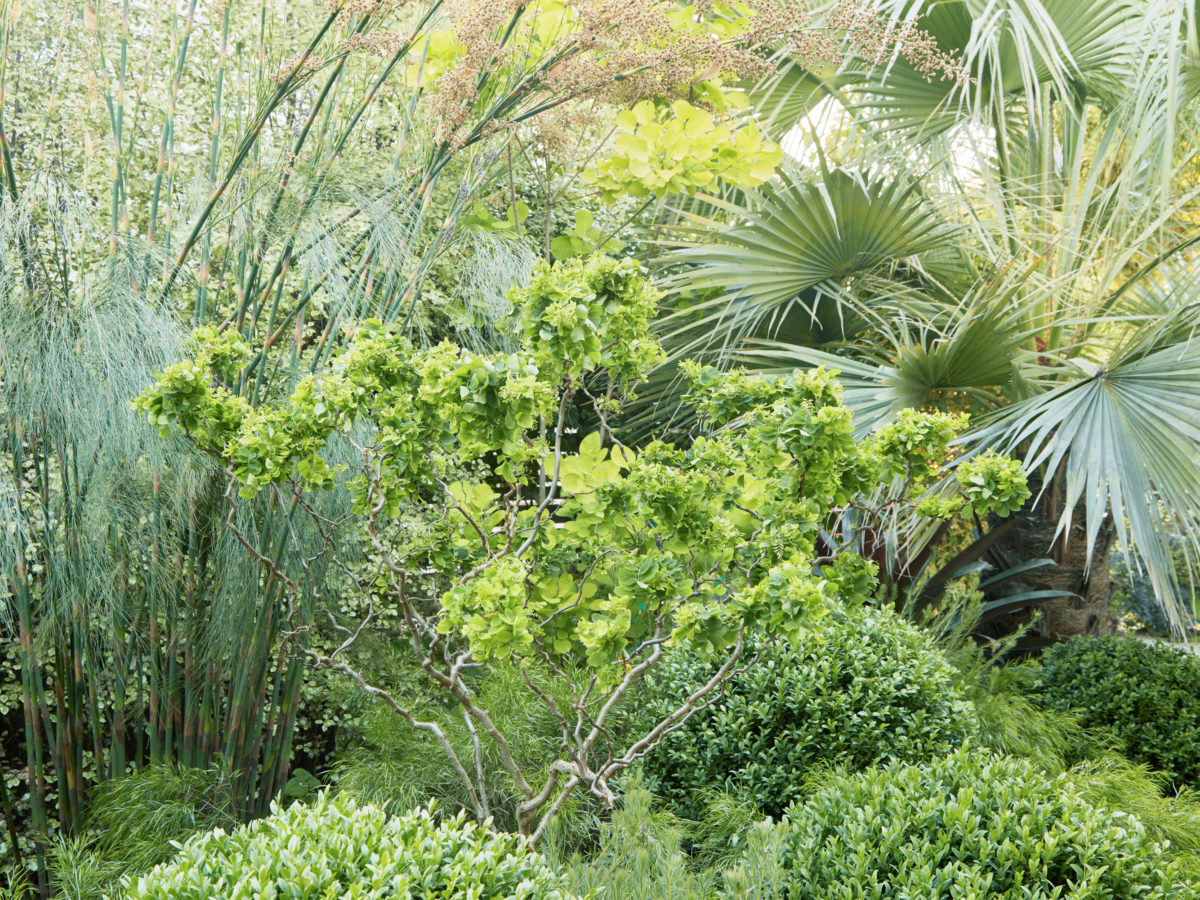
Caitlin Atkinson
On a fundamental level, to layer green on green, you need to consider which greens match, which contrast, and how the textures work together. As with plant placement, this is all about trial and error. “Sometimes I see something in my head and think, ‘Oh, that’s going to look great, then I put it together and see that it doesn’t,’” Grubb says.
Her garden works because there’s a lot of contrast in complementary shades of green. One of the worst things you can do, she says, is place two shades of green together that almost match but don’t. It’s the same with texture: If one plant’s texture too closely resembles another, your eye won’t be able to decipher the two.
“My garden works with various shades of green all the way from chartreuse to dark green, along with some silvers which are shades of green as well,” she says. The bright grass-green ‘Cousin Itt’ shrubs work as a ground cover (and look like the character from The Addams Family) while tying the garden together.
If you’re not an experienced designer, and you want to try to create a garden that has a lot of textures and greens, Grubb suggests you print pictures of other people’s gardens (including this one) and take them to the nursery and ask, “What are these plants?”
(To get you started, some of the plants Grubb used are Buxus sempervirens, Ceanothus ‘Diamond Heights’, Leucophyta brownii, Phlebodium aureum ‘Blue Star’, and Pittosporum ‘Silver Sheen’.)
Meanwhile, if you start with a lot of plants but then decide to add more, she suggests taking a cutting, bringing it to the nursery, and finding the best contrasting green or texture that way.
The Flagstone Path That Isn’t Flagstone

Caitlin Atkinson
Those gray stones are actually basalt, which can be harder to come by. However, one can re-create the look by using pearl gray flagstone to make a path.
To create hers, first Grubb leveled the area, then set the stones in pea gravel. The good news? “That’s the cheapest gravel you can get at any yard,” Grubb says. “It’s not fancy pea gravel. If you go to the rock yard and say ‘I’ll take pea gravel,’ that’s what you’ll get. I find its basic gray and small size to be everything you need gravel to be.”
She also made the path wider than people usually do, which makes it more welcoming. If the plants start getting too big, she’s not afraid to grab a tire iron and drag her basalt stones around until they look right again. (“These are DIY garden lady things,” she says.)
It’s also important to note that the path winds a bit. It’s not a straight shot to the house or to the garden but takes on a more naturalistic, undulating shape.
Bright Green, but Low Water
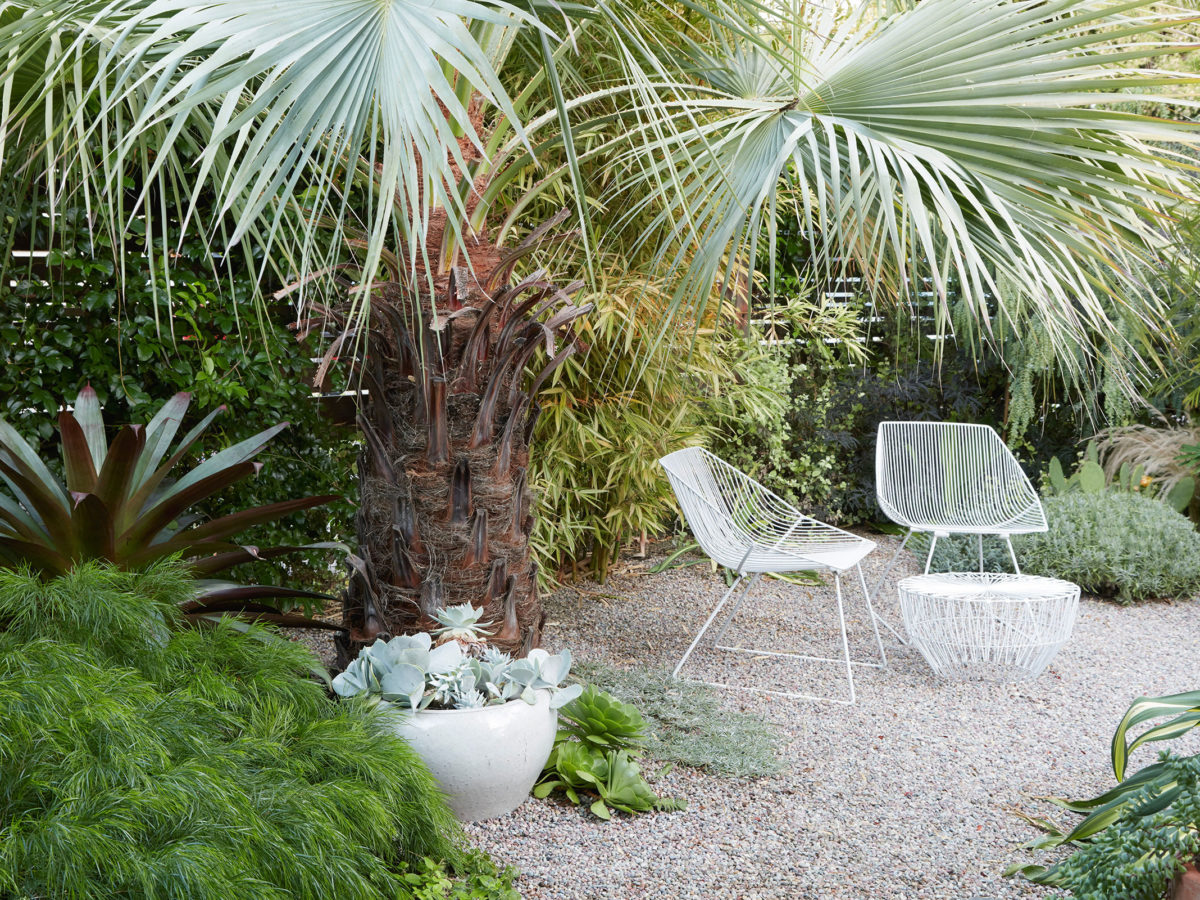
Caitlin Atkinson
One of the things Grubb is most committed to both at her garden center and her nursery is finding plants that have the impact of a jungle species but are low-water instead. “When you are in a drought and everything gets drier, green plants feel so refreshing,” says Grubb.
To stay drought-friendly, she got rid of the lawn and replaced it with gravel. “Tip No. 1 for low-water gardens is that we can’t afford to use lawns as negative space,” she says. “So, once you remove the lawn, you won’t miss green if you make sure the plants you replace it with are green.”
Meanwhile, the plants she used are evergreens, which means they keep their color year-round. “I’m always looking for truly unthirsty, evergreen plants that are green,” she says. “While I love silver agaves, succulents, and cactuses, I want some real green in the garden.”
As a parting thought, Grubb issues a warning: Don’t try to create a garden like this if you want to be able to ramble about the space willy-nilly. “This is the garden for a true control freak,” she says. “There’s no room for half a dozen teenagers or a dog.”
